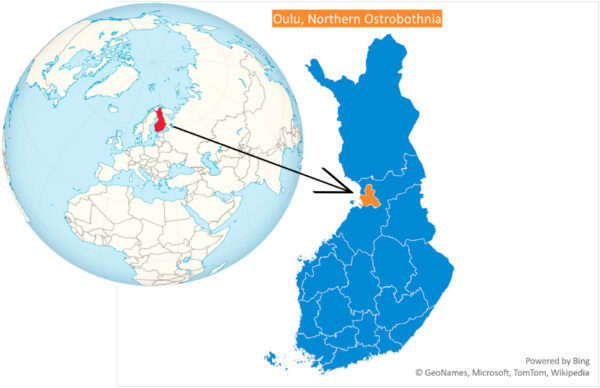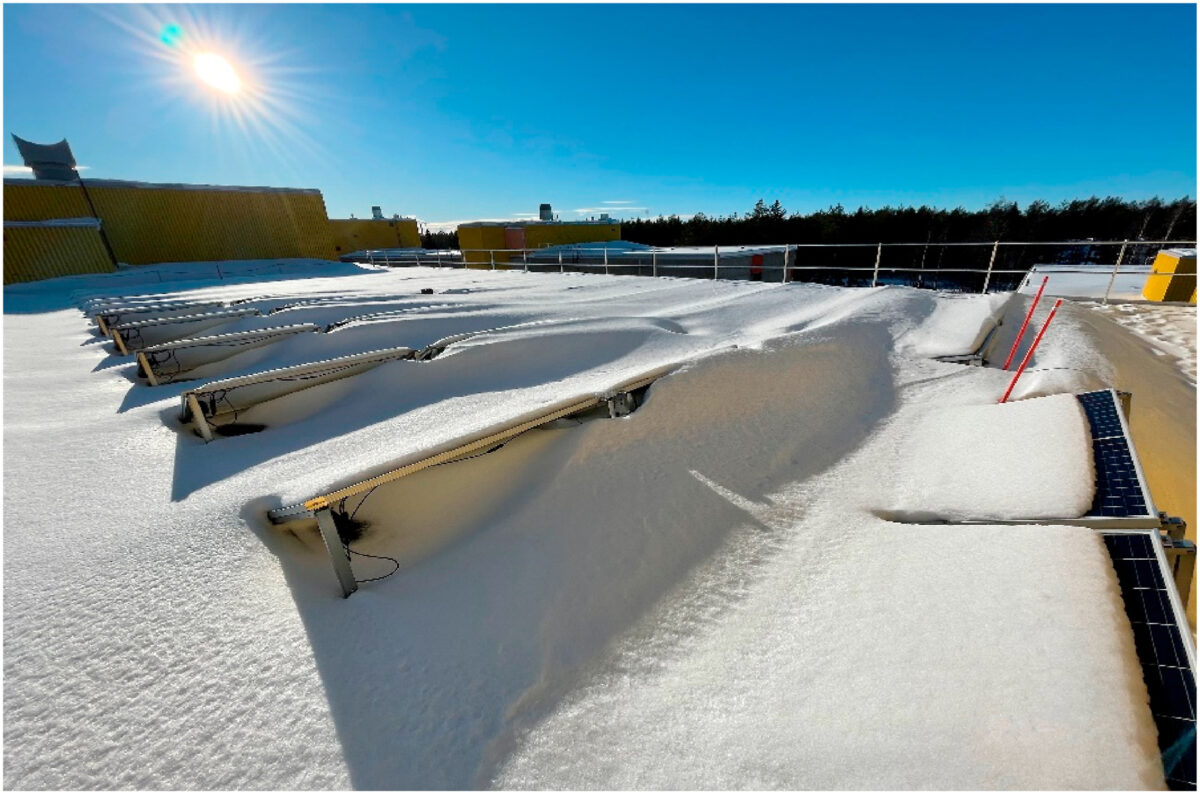Rooftop PV performs better in spring and summer in the Arctic region, while vertical PV performs better in the fall and winter, new research from the University of Oulu in Finland has found.
The researchers said in “Experiences from seasonal Arctic solar photovoltaics (PV) generation- An empirical data analysis from a research infrastructure in Northern Finland” – which was recently published in Renewable Energy – that they conducted an analysis of solar PV data from an experimental setup situated in Oulu across four seasons between 2021 and 2022.
The system consists of 24 solar panels – 12 deployed vertically and 12 installed in a typical rooftop configuration with tilt angles ranging from 23 to 46 degrees. All panels have an output of 275 W, rely on 60 monocrystalline cells, and have an efficiency of 18%.
According to the report, the best overall months for generating PV in the Finnish Arctic are June and July, while the best season is spring. In the winter season, the vertical PV outperformed the rooftop ones by 98.36% and in the autumn by 30.25%; while in the summer the rooftop panels outperformed the vertical one by 30.44% and in spring by 20.2%.
Popular content
“Extreme weather and climatic conditions, significant variations in the day lengths leading to polar nights and days, sub-zero temperatures, snow, and significant seasonal temperature variations characterize the Arctic and subarctic regions,” the researchers stated, adding that the collected data provides accurate insights for future investments and improved predictability of the solar simulations.
As for the preferred tilt angle for the rooftop PV throughout the two years, the research has concluded that 28 degrees was the optimal one. According to the researchers, the panels with that tilt generated 3% more power than the others, in an annual comparison.
“It proved the increased potentiality of solar PV panel at this tilt angle to capture the maximum irradiation during the spring and summer seasons,” the paper explained. “The additional advantages of retaining lower tilt angles in the Arctic are the lesser mutual shading losses when the solar panels are in multiple rows, one behind another, allowing snow clearance at much faster rates.”

Image: University of Oulu, Renewable Energy. CC BY 4.0
This content is protected by copyright and may not be reused. If you want to cooperate with us and would like to reuse some of our content, please contact: editors@pv-magazine.com.


By submitting this form you agree to pv magazine using your data for the purposes of publishing your comment.
Your personal data will only be disclosed or otherwise transmitted to third parties for the purposes of spam filtering or if this is necessary for technical maintenance of the website. Any other transfer to third parties will not take place unless this is justified on the basis of applicable data protection regulations or if pv magazine is legally obliged to do so.
You may revoke this consent at any time with effect for the future, in which case your personal data will be deleted immediately. Otherwise, your data will be deleted if pv magazine has processed your request or the purpose of data storage is fulfilled.
Further information on data privacy can be found in our Data Protection Policy.